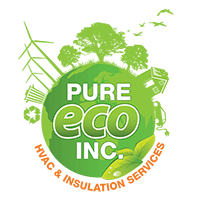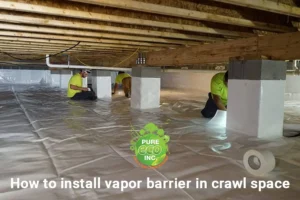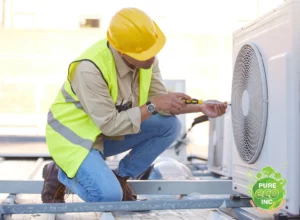
What You Need to Know Before Choosing Spray Foam Insulation
Spray foam insulation has carved a name for itself as a high-performance energy solution. It seals air leaks, improves energy efficiency, and can reduce utility bills. But beneath its insulating power lies an important question that is often overlooked: Is spray foam insulation safe?
In this article, we’ll explore the risks associated with spray polyurethane foam insulation, discuss its chemical composition, review the potential health issues and effects, and help you discover whether it’s the right insulation material for your place.
If you’re unsure whether spray foam insulation is right for you, or if you’re concerned about an existing installation, reach out to our spray foam insulation experts. We’ll guide you through your options and help you create a comfortable, energy-smart home without the toxic trade-offs. If you have any questions or need a free consultation, feel free to call us at (877) 607-9021!
Get Free Estimate!
Request Your Home Comfort Estimate
What Is Spray Foam Insulation?
Spray foam is a chemical-based insulation made through the reaction of two components, typically a polyol resin and methylene diphenyl diisocyanate. During the installation process, these two insulation materials are mixed to expand into a foam that fills cracks, cavities, and framing gaps with a tight seal. The foam hardens and acts as a thermal and moisture barrier.
There are two types of spray foam insulation: open-cell insulation, which is soft and flexible, and closed-cell insulation, which is denser, more rigid, and offers a higher R-value. Each type can reduce air infiltration and improve thermal resistance. However, their safety profile depends largely on whether they are installed correctly and maintained as recommended.
Is Spray Foam Insulation Toxic?
Spray foam insulation is made from reactive chemicals that, during installation, can release fumes known to affect indoor air quality. Of particular concern are isocyanates and volatile organic compounds (VOCs). These substances, when inhaled in concentrated amounts, may cause eye, skin, and respiratory irritation. For some people, especially those with pre-existing sensitivities, repeated exposure can lead to a condition called sensitization, where even low-level contact triggers allergic-like reactions.
So, is spray foam insulation toxic? It can be, especially during the curing phase. The level of risk depends on factors like product formulation, installation quality, ventilation, and exposure duration. With proper precautions and expert handling, many of these risks can be minimized, but homeowners need to be fully informed before installation.

Get Free Estimate!
Request Your Home Comfort Estimate
Is Spray Foam Safe After It Dries?
One of the most common questions is: Is spray foam insulation safe to breathe after it cures? While curing reduces acute exposure, some low-level VOC off-gassing may continue. This is especially true if the foam was improperly mixed or the ambient conditions during application were not ideal. Improperly installed foam may remain tacky, fail to cure completely, and continue releasing VOCs into the air.
Homeowners who live in tightly sealed homes may experience long-term discomfort due to reduced airflow and increased indoor pollutants. That’s why ensuring proper ventilation and air exchange systems, such as HRVs or ERVs, is critical after installing spray foam.

Does Spray Foam Insulation Cause Cancer?
Although no definitive causal link has been established, ingredients used in polyurethane foam insulation, including flame retardants and isocyanates, are suspected to be associated with spray foam-related health risks. Some of these substances are classified as potential carcinogens by the Environmental Protection Agency (EPA) and other health agencies.
Prolonged exposure to off-gassing chemicals may result in chronic symptoms and adverse health effects. Therefore, it’s crucial to assess all risks of spray foam, including those that may emerge years after the foam insulation installation is complete.
Long-Term Effects of Spray Foam Insulation
Beyond the immediate toxicity risks, the long-term effects of spray foam insulation are increasingly under scrutiny. One of the primary issues is indoor air quality. Spray foam creates an airtight seal, which, while beneficial for energy savings, can also trap moisture, carbon dioxide, and VOCs inside the home. This stagnant air can worsen allergies, encourage mold growth, and create an environment where pollutants linger.
There’s also the issue of permanence. Spray foam is notoriously difficult to remove once applied. If it fails to cure properly or causes hidden moisture problems, homeowners are often faced with expensive and invasive remediation work. Attempting to remove cured spray foam can reintroduce toxins into the air and potentially damage the structural components of the home.
Is Spray Foam Dangerous to Your Home’s Value?
In some cases, yes. As awareness of spray foam’s risks grows, some mortgage lenders are beginning to flag homes with spray foam insulation as higher-risk properties. There are reports of lenders refusing loans or requiring full removal before finalizing a mortgage. If you’re thinking about resale value or refinancing, it’s worth investigating whether your insulation choice could become a red flag in the eyes of a possible buyer or a bank.
Is Spray Foam Insulation Safe to Breathe?
For residents moving into a home shortly after installation, whether spray foam insulation is safe to breathe becomes a pressing concern. The answer depends on the time elapsed since installation and the quality of ventilation. Even if installers claim the foam has cured, the smell of off-gassing chemicals can linger. For chemically sensitive individuals, this could result in headaches, fatigue, coughing, and sinus irritation.
Professional installers often recommend vacating the property for 24–72 hours post-installation to allow for curing and adequate ventilation. However, in many homes, air exchange systems like ERVs (Energy Recovery Ventilators) or HRVs (Heat Recovery Ventilators) are required to truly maintain safe indoor air quality in the long run.
Safer Alternatives to Spray Foam Insulation
If the risks feel too high, you’re not alone. Many homeowners now opt for safer alternatives such as cellulose insulation, fiberglass, or mineral wool. These options offer excellent insulation performance without the same toxicity profile.
Before making any insulation choice, ask questions, evaluate your climate, and assess the temperature and humidity profile of your home. The right solution depends on your goals, sensitivities, and the area you’re insulating.
Explore safer, environmentally responsible solutions by visiting Pure Eco Inc.’s spray foam insulation services.
Making an Informed Decision
So, is spray foam safe? It can be, but only when properly applied, ventilated, and maintained. Improper application or neglect of airflow can lead to adverse health effects, structural complications, or reduced air quality. Before moving forward with installing spray foam, consider your home’s ventilation design, your family’s health sensitivities, and your future resale plans. And if spray foam is already present in your home and you’re noticing odors, respiratory irritation, or other warning signs, it’s worth getting a professional air quality assessment.
At Pure Eco Inc., we use only top-quality spray foam materials, and our trained experts follow the highest safety standards. We make sure your insulation works well and keeps your home safe.
Call us today at (877) 607-9021 for a free consultation. Let our team help you make the right choice for your home and your health.
Get Free Estimate!
Request Your Home Comfort Estimate
Faq
Is spray foam insulation safe to breathe?
Spray foam insulation can emit harmful VOCs during and shortly after installation, which may impact indoor air quality. Once fully cured, emissions decrease but may not disappear entirely, especially in poorly ventilated homes. Proper installation and airflow are key elements for safety.
Can spray foam cause skin irritation?
Yes. Chemicals in the foam can cause skin irritation if touched before curing. Always use personal protective gear.
What types of foam are used in insulation?
The two main types of foam insulation are the open cell and closed cell spray foam. Each has different properties and applications depending on where the insulation is used.
Are the potential health risks of spray foam worth the benefits?
It depends. Spray foam offers unmatched energy sealing, but the several risks associated with poor installation and chemical exposure should be carefully evaluated.
Is DIY spray foam safe?
DIY spray foam kits often lack proper safety guidance. Without training and protective equipment, you risk improper application and exposure to harmful compounds.
Is spray foam insulation toxic after it dries?
Even after curing, some spray foam products can continue to off-gas low levels of toxic chemicals. While the acute toxicity risk drops, sensitive individuals may still react. It’s best to consult professionals and monitor air quality.
Are there safer alternatives to spray foam?
Yes. Options like cellulose, fiberglass, and mineral wool offer excellent insulation with fewer toxicity concerns. Learn more about Pure Eco Inc.’s insulation services here or feel free to get in touch with us! We are more than happy to answer all your questions.




